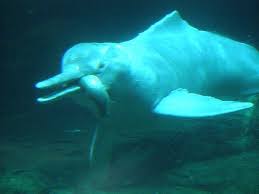The Yangtze River Dolphin, pictured above, may no longer exist. Or, if a few still happen to be left, the species is almost certainly ‘functionally extinct’, meaning that the population is no longer viable. As well, functional extinction refers to a species whose numbers have declined to a point that it can no longer play a meaningful role in the ecosystem in which it lives. This would also be true of the vaquita, which lives in the Gulf of California in Mexico, and was the other cetacean listed as critically endangered by the IUCN1. That is, until recently, when the North Atlantic Right Whale was added to that awful list.
More than half of the 90 or so living species of cetaceans have been marked with ‘concerning conservation status’ by the IUCN. As many as ten species are listed as endangered, among those being: the sei whale, blue whale, fin whale, North Pacific right whale, the South Asian river dolphin, and Hector’s dolphin. Seven more are classified as vulnerable, and another seven as near threatened. It should also be noted that 24 are classified ‘Data Deficient’, as too little is known about them, and they may well fall into one of the above categories. At this time, scientist believe many could be imperiled, but we “simply do not know”.
The situation is so dire that, earlier this year, over 350 marine mammal scientists from 40 countries wrote an open letter to express ‘grave concerns’ over the risk of extinction to whales and dolphins, and to call for global action to save and protect these species. These marine experts state that not addressing the problem will have an adverse impact on whale populations in the ‘over-exploited and human-dominated seas and major river systems’. The experts warned, for example, that only a few hundred adult North Atlantic right whale remain, and that the species will soon be lost if immediate action isn’t taken.
“The recent listing of the North Atlantic right whale, Eubalaena glacialis, by the International Union for Conservation of Nature (IUCN) as ‘Critically Endangered’ reveals the serious failure of its relatively wealthy range countries to address a critical decline. Moreover, the factors driving this ongoing decline are well known, and, we believe, could be addressed.”
The marine mammal experts believe that this decline and possible slide into extinction was avoidable, but no action was taken due to a widespread ‘lack of political will’. They stressed the importance of protecting whale and dolphin species for future generations, stressing the critical importance of these species to the health of our water bodies. They believe that the survival of whales, dolphins and porpoises is ‘key for our survival as well as theirs’.
“..as the COVID-19 pandemic has shown, our connection to nature is a key component in our own wellbeing. Whales, dolphins and porpoises are seen and enjoyed all over the world, and are valued as sentient, intelligent, social and inspiring species; we should not deny future generations the opportunity to experience them. They are also sentinels of the health of our seas, oceans and, in some cases, major river systems and the role of cetaceans in maintaining productive aquatic ecosystems, which are key for our survival as well as theirs, is also becoming clearer.”
So our main take-away is this. It is in our power to do much more, and we largely know what we have to do – so let’s bring it to the attention of our relevant policy makers that it’s time to muster the political will to act. As we’ve written in recent posts, when it comes to whales and dolphins, their survival is our survival. What’s good for them is good for us.
For The Orca’s Voice,
Chris, Canadian Cetacean Alliance
Note 1 – The International Union for the Conservation of Nature (IUCN) publishes a Red List of Threatened Species, and is a foremost authority of measures needed to save them.



Leave a Reply